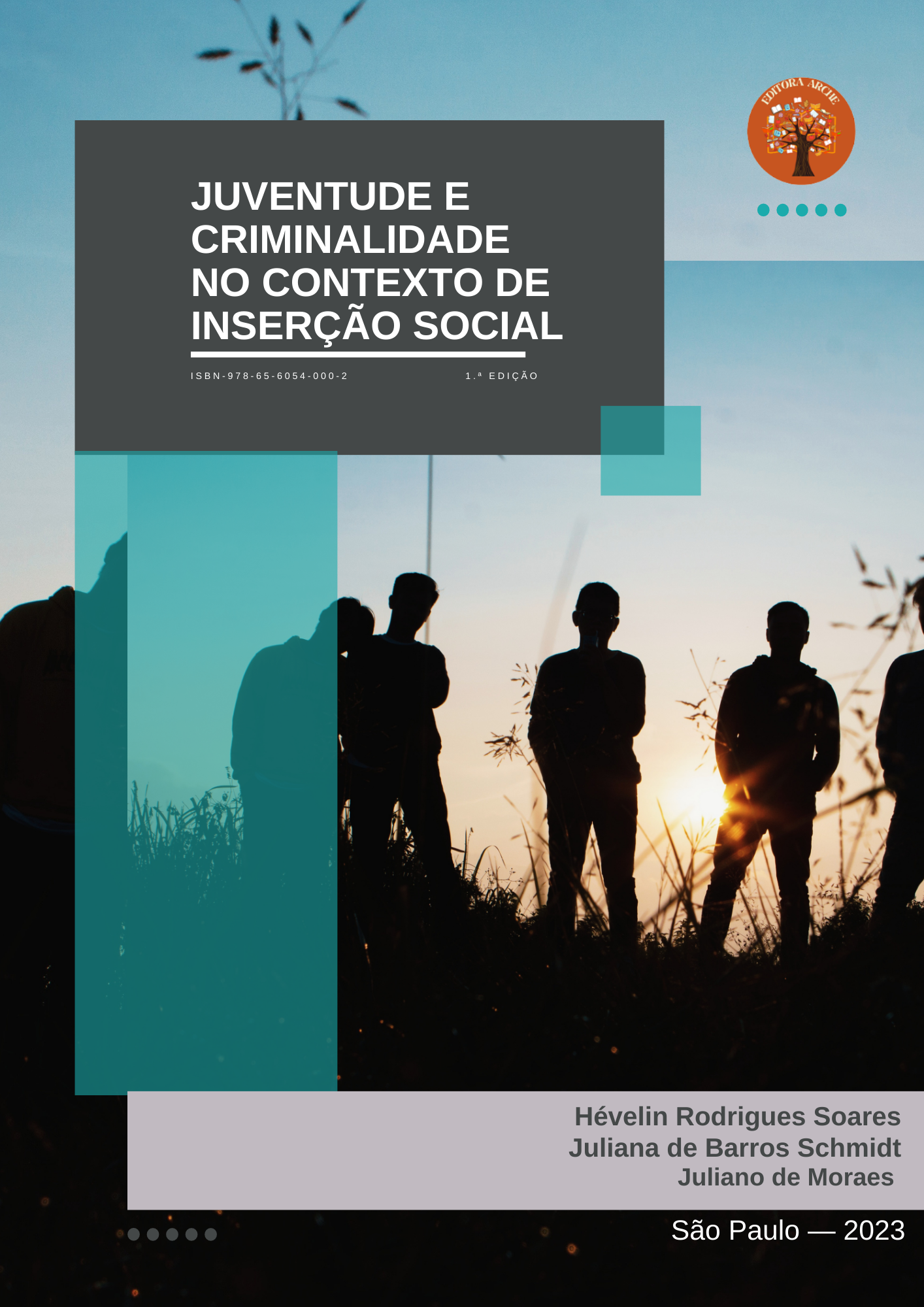YOUTH AND CRIME IN THE CONTEXT OF SOCIAL INSERTION
Keywords:
Youth. Crime. Propensities. Social reinsertion.Abstract
It is with great satisfaction that we present the first edition of the digital book "Youth and Crime in the Context of Social Insertion". This work represents a significant step forward in understanding and analyzing the complex interactions between youth, criminality, individual propensities and the challenges of social reintegration.
Youth is a crucial phase in the formation of the individual, marked by discoveries, transformations and the search for identity. However, in many contexts, social marginalization, lack of opportunities and the influence of various external factors can lead young people to become involved in criminal activities. This book takes an in-depth look at the aspects that contribute to the association between youth and crime, while taking into account the nuances and particularities of individual experiences.
Focusing on the most current data on the subject, it revealed that juvenile crime in Brazil has been a growing concern in recent years. These documents reveal alarming statistics. According to a report published by the Brazilian Institute of Geography and Statistics (IBGE, 2022), the number of young offenders aged between 12 and 18 has increased significantly in the last decade. In 2019 alone, more than 300,000 cases of juvenile crimes were registered in the country. This represents an increase of approximately 40% over the previous year.
The numbers also indicate that certain types of crimes are more prevalent among young people in Brazil. Theft and drug trafficking crimes top the list, accounting for a significant portion of reported cases. This is indicative of the socio-economic challenges that many young people in Brazil face, such as poverty, limited access to education and employment opportunities, and exposure to violence and drug trafficking. These factors contribute to a cycle of criminal behavior among the youth population.
Furthermore, the data reveal a worrying trend with regard to the age at which young people engage in criminal activities. It is disheartening to see that children as young as 12 years old participate in illegal activities. This fact highlights the urgent need for comprehensive intervention programs that target at-risk youth at an early stage, with a focus on prevention rather than punishment.
In response to these worrying trends, the Brazilian government has implemented several initiatives aimed at combating juvenile crime. These include the establishment of specialized courts and correctional facilities for juvenile offenders, as well as programs focusing on education, professional training and social integration. However, it is clear that more needs to be done to effectively address this issue and offer young Brazilians the best opportunities for a positive future.
In short, the statistical framework on juvenile crime in Brazil shows a worrying picture of the growing number of young offenders and the types of crimes in which they are involved. They highlight the urgent need for comprehensive, fruitful, and ongoing intervention programs that address the underlying causes of this problem and provide at-risk youth with the best education and employment opportunities. Only through sustained efforts and collaboration between government agencies, civil society organizations and communities can we hope to break the cycle of youth crime in Brazil.
Throughout the pages of this book, renowned experts and researchers explore the propensities that can lead young people to become involved in criminal activities. Comprehensive analysis of factors such as the influence of the social environment, emotional vulnerabilities and economic challenges offers valuable insights into the motivations behind youth choices.
In addition, a special focus is given to the issue of social reintegration. Understanding that youth crime should not be seen as a life sentence, this book examines effective strategies to help young people positively reintegrate into society. Approaches to rehabilitation, education, and psychosocial support are carefully analyzed, providing a comprehensive guide for professionals, academics, and policymakers interested in promoting the positive transformation of youth in conflict with the law.
By presenting this first edition of the digital book "Youth and Crime in the Context of Social Insertion", we hope to make a significant contribution to academic and public dialogue on this critical and multifaceted issue. We believe that a deeper understanding of the dynamics underlying youth crime and effective reintegration strategies can inspire positive change in our society, helping young people to walk a path of resilience, growth and success.
We invite all readers to dive into this journey of discovery and learning, in the hope that the ideas here ui presented can catalyze transformative and impactful actions towards a better future for our young people and our community as a whole.
Downloads

Downloads
Published
How to Cite
License
Atribuição CC BY
